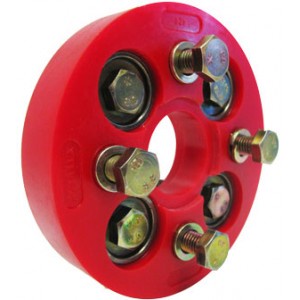In the maritime industry, the efficient transmission of power from the engine to the propeller is crucial for vessel performance. Two commonly used solutions for this purpose are marine coupling and shaft couplings. While both options serve the same fundamental purpose, their design, installation, and performance characteristics differ.
Read on and discover the differences between marine and shaft couplings, helping you make an informed decision when selecting the ideal solution for your vessel.
Marine Couplings: Flexibility and Misalignment Compensation
Marine couplings are designed to compensate for misalignment between the engine and the propeller shaft. They provide flexibility, allowing slight angular and axial movements to accommodate variations in alignment.
Marine couplings are typically constructed using materials like rubber, elastomers, or flexible alloys. The flexibility of these couplings helps reduce stress on the drivetrain components and minimises the risk of damage due to misalignment, vibration, or shock. Additionally, marine couplings act as a buffer, reducing noise and vibration transmission, resulting in smoother and more comfortable operations.
Shaft Couplings: Rigid Power Transmission
Shaft couplings are rigid connections used when precise alignment between the engine and the propeller shaft is achievable and maintained throughout the vessel's operation. These couplings are typically made of robust stainless steel or alloy steel.
Shaft couplings ensure a direct and efficient power transfer from the engine to the propeller without flexibility or misalignment compensation. They are known for their high torque capacity, stability, and durability, making them suitable for vessels that require precise power transmissions, such as high-speed crafts or large commercial ships.
Choosing the Right Solution
The selection between marine and shaft couplings depends on the vessel's design, operational requirements, and budget. Marine couplings provide a flexible and forgiving solution if the engine and propeller shaft alignment is subject to frequent variations or if there is a need for vibration and shock absorption. They are often favoured in applications with critical misalignment compensation and noise reduction, such as smaller recreational boats or vessels operating in rough seas. On the other hand, if the engine and propeller shaft alignment can be precisely maintained, shaft couplings offer a rigid and efficient power transmission solution suitable for larger vessels and high-performance applications.
Marine couplings and shaft couplings are two distinct solutions with their advantages and considerations. By understanding the differences between these coupling options, vessel owners and operators can make an informed decision that aligns with their needs. In addition, with the best manufacturer like Poly Flex, rest assured you can find a professional to assist you with any of your engine needs.
Poly Flex remains dedicated to delivering cutting-edge solutions that enhance industrial efficiency, improve performance, and contribute to the success of its clients worldwide. Explore your best options for advanced engine solutions as you check out Poly Flex today!


No comments yet